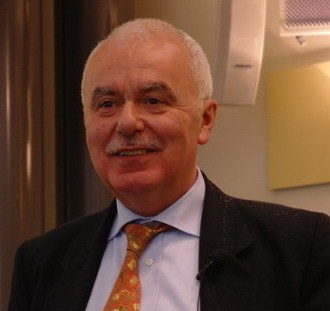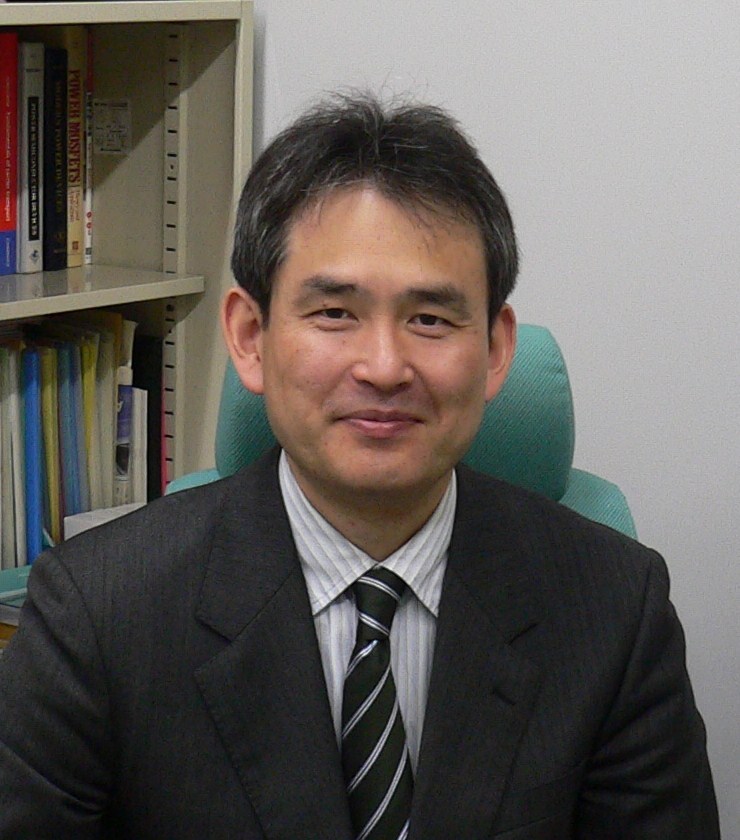
Electronic news bulletin for the potential participants to ESSCIRC/ESSDERC 2013
No.1, 8th of February, 2012| e-news home | |
 |
Jesus A. del Alamo obtained a Telecommunications Engineer degree from the Polytechnic University of Madrid in 1980 and MS and PhD degrees in Electrical Engineering from Stanford University in 1983 and 1985, respectively. From 1985 to 1988 he was with NTT LSI Laboratories in Atsugi (Japan) and since 1988 he has been with the Department of Electrical Engineering and Computer Science of Massachusetts Institute of Technology where he is currently Donner Professor and MacVicar Faculty Fellow. His current research interests are centered on nanoelectronics based on compound semiconductors. He is also investigating the potential of online laboratories for science and engineering education. Prof. del Alamo was an NSF Presidential Young Investigator. He is a member of the Royal Spanish Academy of Engineering and Fellow of the IEEE. He currently serves as Editor of IEEE Electron Device Letters. |
Abstract: Nanometer-scale InGaAs Field-Effect Transistors for THz and CMOS technologies Integrated circuits based on InGaAs Field Effect Transistors are now widely used in the RF front-ends of smart phones and other mobile platforms, wireless LANs, high data rate fiber optic links and many defense and satellite communication systems. InGaAs ICs are also under intense research for new millimeter-wave applications such as collision avoidance radar and gigabit WLANs. In the last few years, as Si CMOS faces mounting difficulties to maintain its historical scaling path, InGaAs-channel MOSFETs have emerged as a credible alternative for mainstream logic technology capable of scaling to the 10 nm node and below. To get to this point, fundamental technical problems had to be solved though there are still many challenges that need to be addressed before the first non-Si CMOS technology becomes a reality. The intense research that this exciting prospect is generating will also reinvigorate the long march of InGaAs FETs towards the first true THz electronics technology. This talk will review progress and challenges of InGaAs-based FET technology for THz and CMOS. |
|
![]()
| e-news home | |
 |
Ing. Livio Baldi graduated in Electronic Engineering in 1973 at the University of Pavia. From March 31st, 2008 he has moved to Numonyx, the new ST-Intel joint venture on Flash memories, in charge of External Relations and Funding in Central R&D, and representing it in AENEAS and CATRENE. From 2010, following the acquisition of Nymonyx by Micron Technology, he fills the same position in Micron Semiconductor Italia. He holds 33 US patents, 17 European patents, and is author of more than 70 papers and communications to conferences. |
Abstract: Emerging Memories Solid state memories are a critical element of any computing and control system, and are becoming the prevailing tool for information storage. The variety of functions covered by memory devices has given rise to different memory typologies, all based on the principle of charge storage. However, after almost 50 years of continuous evolution, all these types of memories seem to have reached their technological limits, and a drastic change of approach is required. Emerging memories are based on different storage mechanisms, and no clear winner has emerged yet, even if some broad trends can be identified. The main families of memories will be discussed with reference to their performance trade-offs and scalability. At the moment the large variety of alternatives is preventing the focusing of investments needed to reach the same maturity as consolidate memory types, but niche applications can be indentified that could push the technological development. Even if none of the proposed approaches seem yet really capable to fulfill the role of "unified memory", a possible future scenario will see combinations of different technologies to built specialized memory systems. |
|
![]()
| e-news home | |
 |
Tsunenobu Kimoto received the B.E. and M.E. degrees in Electrical Engineering from Kyoto University, Japan, in 1986 and 1988, respectively. He joined Sumitomo Electric Industries, LTD in 1988. In 1990, he started his academic career as a Research Associate at Kyoto University, and received the Ph.D. degree from Kyoto University in 1996, based on his work on silicon carbide (SiC). From 1996 to 1997, he was a visiting scientist at Linköping University, Sweden, and he is currently a Professor at Department of Electronic Science and Engineering, Kyoto University. Since 2009, he is also a core researcher of the Funding Program for World-Leading Innovative R&D on Science and Technology (FIRST Program) on SiC. His main research activity includes SiC, GaN-based power devices, nano-scale Si devices, and materials for ReRAM. |
Abstract: Ultrahigh-Voltage SiC Devices for Future Power Infrastructure High-efficiency electric power conversion is an essential technology for energy saving. The efficiency of power converters/inverters strongly relies on the performance of power semiconductor devices employed in the power electronic systems. Silicon carbide (SiC) is a newly-emerging wide bandgap semiconductor, by which high-voltage, low-loss power devices can be realized owing to its superior properties. It is expected that SiC unipolar devices will replace Si unipolar/bipolar devices in the blocking-voltage range from 300 V to about 4500 V. For ultrahigh-voltage applications above 4500 V, SiC bipolar devices will be attractive. In this talk, recent progress in ultrahigh-voltage SiC power devices is reviewed. In particular, challenges for ultrahigh-voltage (> 20 kV) PiN diodes and power transistors are presented. |
|
![]()
UNSUBSCRIBE to ESSDERC e-newsletter: [email protected]